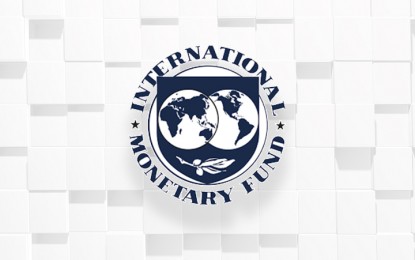
MANILA – The International Monetary Fund (IMF) has slashed its growth outlook for the Philippines for 2020 from 6.3 percent to 0.6 percent due to the impact of the coronavirus disease 2019 (Covid-19).
Despite the big drop in its projection, the lender, based on its World Economic Outlook (WEO) released Tuesday night (Manila time), forecasts a recovery of the domestic economy in 2021, with an output of 7.6 percent.
These projections are in line with its 0.6-percent growth forecast for Asean-5 for this year and 7.8 percent next year.
Economic managers forecast zero to -1 percent growth, as measured by the gross domestic product (GDP), for the economy this year on account of the economic impact of the pandemic.
IMF Country Representative to the Philippines Yongzheng Yang, in a reply to e-mailed questions from the Philippine News Agency (PNA), attributed the cut in their growth projections for the country to “supply disruptions related to Covid-19 and weaker demand in the Philippines’ major trading partners.”
“Tighter global financial conditions, weaker public confidence, and lower remittances are also expected to weigh on private consumption and investment,” Yang said.
He, however, said these factors are seen to be countered partly by policy support.
The government has formulated PHP1.1-trillion fiscal and monetary measures to help sectors affected by the pandemic while various levels of quarantine have been raised nationwide to curb the further rise of Covid-19 cases.
The support includes the acquisition of medical equipment for health workers, financial aid to poor households and affected workers, and a cut in the Bangko Sentral ng Pilipinas’ (BSP) key policy rates and banks’ reserve requirement ratio, with the central bank measures targeted to encourage economic activities.
As of 4 p.m. Tuesday, the country has recorded 5,223 Covid-19 infections, with 295 patients who have recovered and 335 who have died.
Metro Manila was placed under a community quarantine from March 15 to April 12 to reduce people’s movement, with the exemption of health workers and those delivering basic services and commodities, among others.
However, this was upgraded to an enhanced community quarantine starting March 16 that covers not just the country’s capital region but mainland Luzon, which accounts for about 70 percent of the domestic output.
The quarantine period in Luzon, for one, was extended until April 30 to ensure that gains made in the early part of the quarantine period would be sustained and as cases continue to rise.
Yang said the health outbreak is seen to post its peak in the second quarter this year “leading to a gradual recovery in the second half of the year.”
He said “stemming the spread of Covid-19 is of utmost importance,” citing that “policies at the moment should focus on both protecting public health and putting people back to work.”
“Getting the virus under control is, if anything, a prerequisite to saving livelihoods. By acting forcefully now with strong actions to stop the spread of infections, complemented by strong economic policy actions to support people and businesses, the pandemic can be ended sooner with less human and economic cost,” he said.
Yang said the IMF welcomes the Philippine government’s measures to address the pandemic’s impact.
He noted that because of “prudent macroeconomic management, the Philippines has built considerable policy buffers in recent years, and both the government and the BSP have been making good use of this policy space.”
“The country has ample room for additional policy stimulus, if needed, given the relatively low level of public debt and well-anchored inflation expectations,” Yang said. (PNA)
